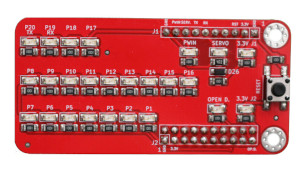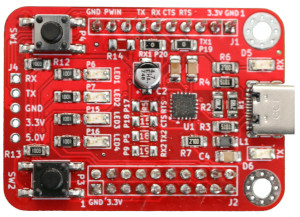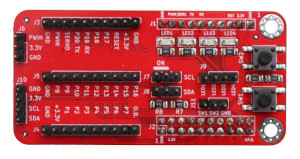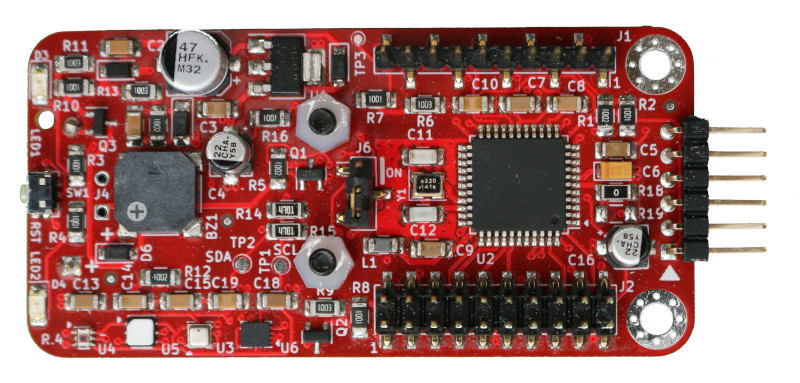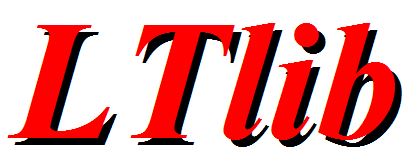mini Sensing - Test Board
La scheda di sviluppo mini Sensing – Test Board, è pensata per estendere la scheda di sviluppo mini Sensing – PIC Board, per mezzo di LED assegnati ad ogni pin. In questo modo si possono fare semplici test di verifica sulla scheda mini Sensing – PIC Board senza dover collegare LED esterni. I LED sono collegati anche sulle alimentazioni, al fine di verificare facilmente la loro presenza.
mini Sensing - USB Board
La scheda di sviluppo mini Sensing – USB Board, è pensata per estendere la scheda di sviluppo mini Sensing – PIC Board, per mezzo dell’interfaccia USB. In particolare il connettore utilizzato è Type C, attualmente utilizzato per i nuovi cellulari. La scheda si può montare sopra i connettori di espansione della scheda mini Sensing - PIC Board. Il collegamento al PC permette di realizzare data logger o permette di impostare parametri dedicati sulla scheda, nonché esplorare l’utilizzo della porta USB. La scheda è supportata dalla libreria LTlib 5 e sono disponibili degli esempi dedicati al suo utilizzo.
Altre schede di espansione, possono essere ulteriormente collegate alla scheda mini Sensing – USB Board, permettono di ampliare l’ambito di utilizzo della scheda e di adattarla a molte applicazioni. La scheda mini Sensing – USB Board può essere usata anche come semplice convertitore USB seriale, senza necessitare della scheda mini Sensing – PIC Board.
mini Sensing - Pin Test Board
La scheda di sviluppo mini Sensing – Pin Test Board, è pensata per estendere la scheda di sviluppo mini Sensing – PIC Board, per mezzo di LED, pulsanti e un facile accesso ad ogni pin per mezzo di connettori aggiuntivi con serigrafia. In questo modo si possono fare semplici test di verifica sulla scheda mini Sensing – PIC Board senza dover collegare LED esterni, pulsanti o saldare fili per accedere a dei pin specifici.
mini Sensing - PIC Board
La scheda di sviluppo mini Sensing – PIC Board, è un sistema completo che permette di sviluppare molte applicazioni con PIC32 e PIC24, senza richiedere l’aggiunta di hardware esterno. In particolare sono presenti due modelli, uno per PIC24FJ128GA204 e uno per PIC32MX150F128D. La scheda, si può contenere nel palmo di una mano, è alimentabile con due batterie stilo formato AA e può essere programmata facendo uso dei programmatori ufficiali Microchip o compatibili. Il numero dei sensori a bordo la rende ottimale per lo sviluppo di applicazioni Home Automation, IoT e piccoli robot. La scheda è supportata dalla libreria LTlib 5 e per ogni sensore sono disponibili degli esempi dedicati. Le schede di espansione disponibili, permettono di ampliare l’ambito di utilizzo della scheda, adattandola a molte applicazioni.
Libreria LaurTec LTlib 5.1.1
La libreria LaurTec LTlib 5.1.1 permette la compilazione di codici scritti per i microcontrollori della famiglia PIC16, PIC18, PIC24F e PIC32. Integra librerie per i moduli interni e molte periferiche esterne. La libreria contiene tutti i sorgenti e gli header file ed è fornita con esempi di programmazione. La nuova versione include nuove funzioni grafiche OLED, GLCD, sensori, moduli radio, ed aggiunge il supporto PIC32 alla versione Maker.
Registrati al sito
Accedi a tutte le risorse e articoli non visibili pubblicamente, puoi registrarti con pochi passi.
Login
Online
Abbiamo 185 ospiti e nessun utente online

